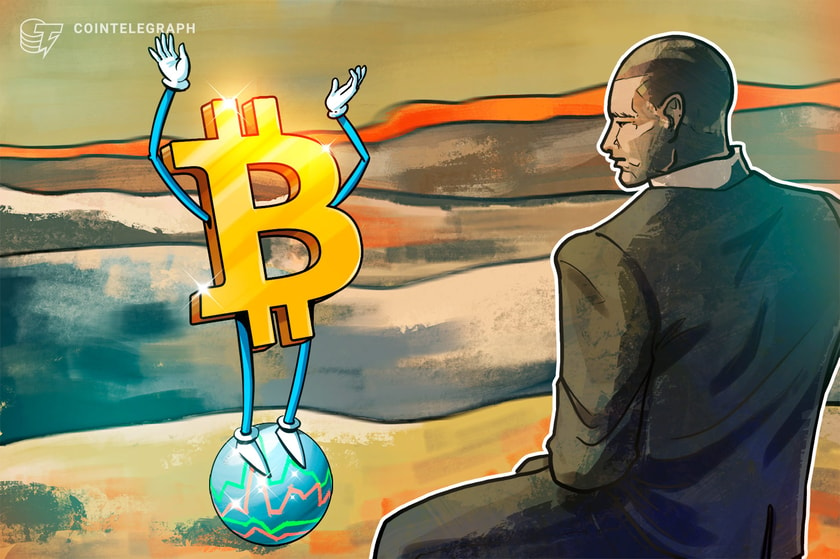Trading Bitcoin Vs. BTC Futures — Which Is Best for You?
There’s an increasing number of exchanges offering futures contracts trading. So far there’s Binance, FTX, Bitfinex, Bybit, and Kraken, to name just a few. Volumes are also picking up across the board and it appears that retail traders are growing more interested in experimenting with these complex instruments.
As recently reported by Cointelegraph, there are multiple benefits to using futures trading. Traders using them can hedge and maintain peace of mind during periods of high volatility. Futures contracts can be used to reduce risk and leverage bets when the appropriate strategies are deployed.
Professional traders frequently utilize futures contracts for better positioning on both sides of the market. In this article we will introduce the basic mechanics behind the instrument, their hidden costs, and some of the trading strategies professional traders regularly use to capitalize on its benefits.
What is a futures contract?
Simply put, a futures contract is an agreement to buy or sell an asset at a later date for a predetermined price. It is known as a derivative instrument because its value relies on an underlying asset.
Futures contracts were initially associated with hard commodities such as gold, oil, and seeds. Those instruments allowed producers (farmers and miners) to better manage their financial risk by creating the possibility of locking in prices upfront.
On the other hand, an airline company can hedge its fuel cost, which is a win-win for both parties.
The buyer, also known as long, hopes for a price increase on the underlying asset. The futures contract seller, or short, is betting on a price retraction to make a profit.
Another allure of the futures contract is that it allows one to decrease their stake without holding stablecoins or fiat deposits on exchanges. A buyer could increase their position during bank holidays or a cash restrainment period.
Cryptocurrency miners also benefit from utilizing the instrument by hedging future revenues and reducing cash flow uncertainties. There are countless cases for professionals to trade futures contracts, and even retail traders can benefit from their use.
Futures in comparison to spot and margin trading
Every futures trade needs a buyer and a seller for the same size and maturity. There is just no way there could be a more substantial short (or long) position. Such constant equilibrium is a big difference from margin trading, where traders need to borrow the asset to use leverage.
Spot means settlement happens at the same time as the trade since the buyer gets cryptocurrency, while the seller receives fiat or stablecoin (or another asset) as soon as the trade takes place. In the futures markets, both sides will deposit some margin, so no one initially receives anything from it.
It’s important to note that futures trading does not happen in the same order book as spot trading. Its price can, and usually will, vary from spot exchanges. Even if one trades at Binance Futures, the futures price will fluctuate from spot prices in the exchange’s regular market.
Reasons for fluctuation between spot and futures pricing
As mentioned earlier, when selling through the spot market the order is settled immediately. By opting to sell future contracts, the seller is postponing this settlement, and will sometimes demand more (or less) money depending on market conditions.
But there’s a catch. To prevent market manipulation, margin calculation does not take into account a contract’s trading price. Derivative exchanges usually create indexes, also known as ‘fair price’, which are calculated by the average price of spot exchanges.
In doing this, exchanges offering futures contracts reduce the incentives for anyone attempting to manipulate its price. The underlying fair price of the asset will be used to determine if a position is using too much margin and thereby should be forcefully closed.
Understanding the basic mechanics of a futures contract
It is possible to sell (short) a futures contract and repurchase the same amount later on, netting any exposure. The trick here is the margin deposited by both parties for the trade to happen.
When the market moves up, the margin is moved from the seller (short) to the buyer (long). That is automatic and happens every second as it is calculated based on the “fair price”.
Let’s consider a scenario where one deposited 100 USDT at Binance Futures. This investor might be willing to buy (long) 1,000 USDT worth of Bitcoin (BTC) futures using 10x leverage.
Such a buyer cannot withdraw future contracts, nor transfer them to regular Binance exchange. This is because a Bitcoin futures contract is not the same thing as an actual Bitcoin.

Binance Futures trading. Source: Binance
As shown in the futures example above, a 0.114 BTC order – worth $1,000 – would only cost this investor $49.87. This ‘cost’ refers to the initial margin required to hold such a position. A larger collateral will be necessary if the underlying Bitcoin price (fair price) starts to move down.
Both sides of the trade must deposit margin, although it will differ for each pending market conditions. There’s an implicit cost to carry those perpetual contracts. Most traded cryptocurrency futures contracts never expire, so in theory, an investor might never need to close the position.
The advantage futures have over trading spot
Even if the buyer has $1,000 to spend, one could use their own money for other short-term trades. For example, $200 could be assigned as margin for the 0.114 BTC position, while the remaining $800 buys leveraged positions on altcoins.
Some traders don’t feel comfortable in having large sums deposited on exchanges. Leverage trades can reduce market exposure, giving one the ability to sell their spot market position in smaller tranches afterward.
Degenerate gamblers can also benefit by making small deposits each day, or week. This strategy puts a hard limit on their losses while providing a decent upside for amounts as low as $50.
The views and opinions expressed here are solely those of the author and do not necessarily reflect the views of Cointelegraph. Every investment and trading move involves risk. You should conduct your own research when making a decision.









